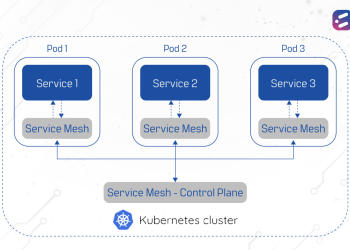With the pandemic pushing people and students to work and learn from home, the global learning management system (LMS) market size has seen tremendous growth. In 2021, it was valued at US$ 14.43 billion, and is projected to see growth to US$ 40.95 billion by 2029.
LMS is now being used by organizations of all sizes and kinds – from government agencies to traditional and e-learning-based institutions – because they not only improve methods of teaching but save time and money by allowing instructors and administrators to efficiently manage elements such as registration, logins, subscriptions, content, access communication, certifications, and more.
Broadly divided, you have the B2B LMS, which is implemented within an organization for upskilling its own employees; and the B2C LMS, which is implemented by EdTech companies for subscription-based learning for the general public.
While the same at their core, here are the key differences between LMS-es used in a B2B context vs ones used for B2C.
B2B Learning Management Systems
Within an organization, LMS is used primarily for knowledge management (KM), meaning the gathering, sharing, and analysis of an organization’s knowledge in terms of resources, people skills, and so on. These vary according to an organization’s goals and strategies.
A typical B2B LMS would offer features like:
- Customizable course plans:
The modular design of LMS allows for the flexibility of open-ended, self-paced, and blended courses based on what exactly is required of the employee - Custom learning paths:
LMS can be configured to incorporate various learning paths, sequential or non-sequential, as well to assign courses for each employee as per their needs - Tracking user results and comparison:
LMS can track sign-up rates, completion and drop-out rates, time spent on learning, etc.
There is less need for scale because a B2B LMS is restricted to the organization base. However, a B2B LMS usually needs to be integrated with multiple third-party content providers (MOOCs) unless they have fully custom content.
Examples of B2B LMS would be employee training to meet KPIs, upskilling, as well as onboarding. The LMS is also used to help train staff by providing access to training materials across various devices. These are interactive, which means that employees can give feedback as well to help employers understand how effective the training courses are.
B2C Learning Management Systems
This category of LMS has helped meet the increased demand for remote learning in terms of both quality and the sheer diversity and range of courses that can be made available. LinkedIn Learning, Udemy, and Coursera are some examples of B2C LMS.
This is more of an e-commerce-oriented social platform, where consumers can log on and subscribe, and pick courses from a catalog based on reviews and price, etc. The learning experience is similar to that of B2B LMS. For instance, it allows learning flexibility in the sense that personalized courses of any complexity and specialization and for any audience can be created.
Now, within this category, some B2C platforms are merely aggregators, while others create the content. Either way, the B2C LMS is open to every kind of user. A point to note is that since there is a much larger user base, scaling up requires planning.
There are different types of B2C LMS in the market – here are the most common ones.
- The basic LMS:
This is about basic functionality for creating, storing, and managing courses, and compiling reports on academic performance. - Open-source LMS:
Same as regular LMS, but such sites are developed based on open-source software. - Custom-Built Learning Platform:
Edtech platforms adapted to specific courses. An example would be a management school offering business certification programs for high-level executives.
Does your LMS deliver on your business needs?
Learning Management Systems are enterprise applications that often have an important role to play in the success of a business. In the case of e-learning businesses, these platforms form a critical part of the business itself.
This being the case, just as with any other application that your organization may run, it is important to assess the business needs that the LMS needs to serve, whether you require a custom-built platform or if an off-the-shelf solution will do, and whether the LMS software you use is modern and capable of delivering optimal performance and value now and in the future.
There is an LMS for every industry, need, and budget. So whether you need a tailor-made LMS built from the ground up, customizations to be implemented on a ready-made platform, or for your legacy LMS to be modernized, at CloudNow we have considerable experience in each of these categories – both for B2B and B2C LMS needs. Get in touch with us for a consultation today.













